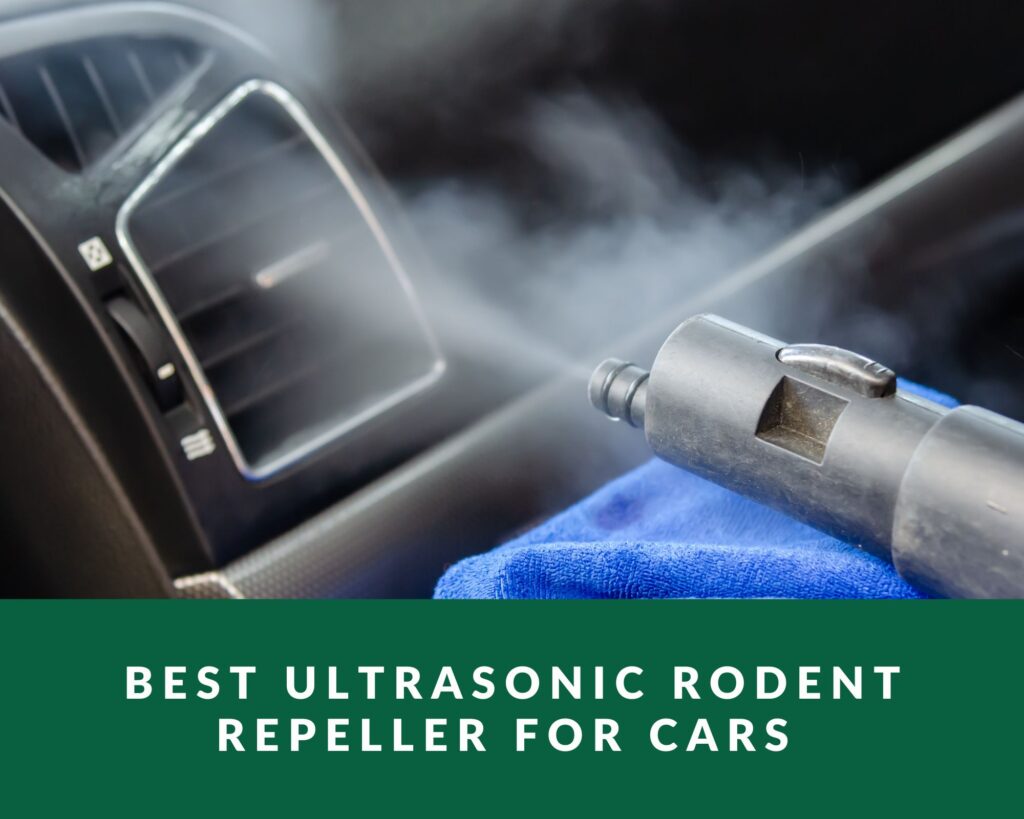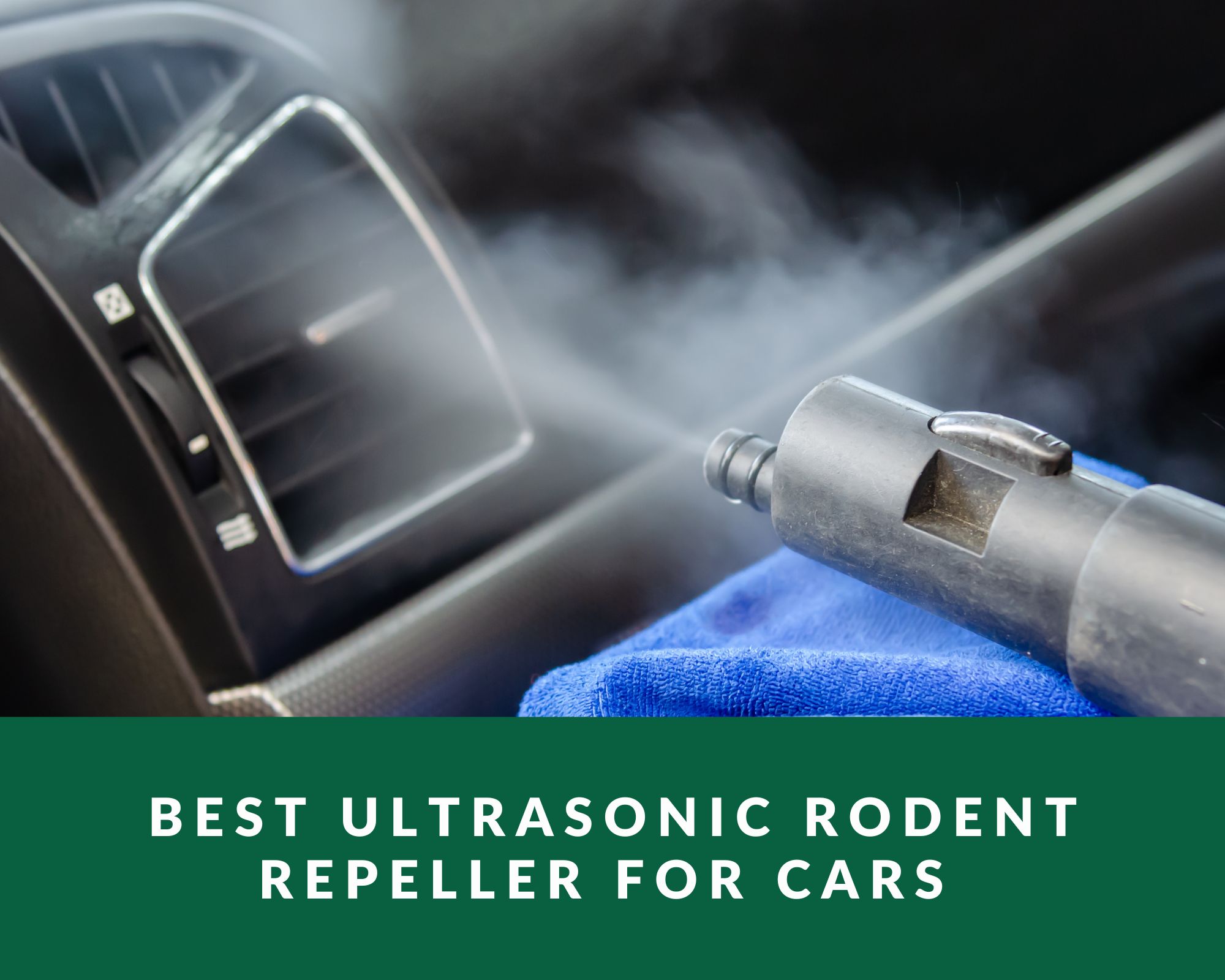
ultrasonic rodent repeller for cars
While you use your automobile to get around, rodents view it as a pantry and possibly even a new home. Due to the soy-based insulating substance used in modern automobiles, rats, mice, and other rodents find wires to be very appetizing. Additionally, the tight canopy offers them great shade for nesting.
There are a number of ways to stop these creatures from wreaking havoc on your car. Combine any of the following methods to successfully prevent rodents from entering your vehicle
A quick look at the best rodent repeller for cars
- Beacon FA105 Rentokil battery operated mouse repeller
- Loraffe under hood animal repeller
- Direder rodent repellent ultrasonic under hood animal repeller
- Wikomo outdoor solar powered ultrasonic pest repeller
Signs of rodents in your car
Rodents can cause serious damage to your car if they are left unchecked. These common indications that a rodent attack is occurring on your vehicle are listed below:
Foul Smell
There can be an offensive odor nearby. Even while you might not always be able to identify it, you will always be aware of its existence due to the offensive smell.
Scurrying Noise
Rodents can create noises when gnawing or clawing. They can be nibbling on a wire or scraping the surface.
Chew Marks
Chew marks are possible on older vehicles, however, they are unusual in newer models. Examine the floor mat, cushion, seat belt, and other surfaces for gnaw marks.
Faulty Display
The wiring of devices linked to a display unit can become chewed by rats and mice. Defective displays may result from such situations.
Nesting material
Rodents will often make nests out of materials they find in your car, such as insulation or paper.
Droppings
Rodent droppings are small, dark, and oval-shaped. You may find them in the glove box, trunk, or under the seats.
Damage to upholstery
Rodents may also chew on upholstery, leaving behind holes or tears.
Best way to get rid of mice in my car
There are a few steps you can take to get rid of mice in your car quickly:
Remove any food sources
Mice are attracted to food, so make sure you don’t have any crumbs or food wrappers in your car. Clean the interior thoroughly and remove any food items you may have left inside.
Use mouse repellents
There are several natural and chemical mouse repellents that you can use in your car. Some popular options include peppermint oil, mothballs, and ultrasonic repellents. These products emit smells or sounds that mice find unpleasant and can help deter them from your car.
Set mouse traps
If repellents are not enough, you may need to set traps to catch the mice. There are various types of traps available, including snap traps, glue traps, and live traps. Be sure to dispose of the mice once they are caught.
Seal any entry points
Finally, you should inspect your car and seal any entry points that mice could use to get inside. Look for any gaps or holes in your car’s exterior and seal them with steel wool, caulk, or another appropriate material.
Best rodent repeller for cars
It might be challenging to find an effective rodent repellent for your car because many solutions contain harsh ingredients and are inappropriate for use in small places. Thankfully, there are several plant-based substances that rats can’t tolerate, and eucalyptus oil is one of them.
1. Beacon FA105 Rentokil battery-operated mouse repeller
A portable ultrasonic mouse repellent is effective. 24-hour protection with ultrasound. The perfect choice for homes, garages, lofts, sheds, and RVs. Put it everywhere you need it because it’s battery-operated and doesn’t need a plug. Free of poison and fully safe to be around kids, cats, and dogs. Effective long-term pest management that is safe.
2. Loraffe under hood animal repeller
The under-hood animal repellent from the company Loraffe, which makes battery-operated rodent deterrents, is among its best-selling items. Rats and squirrels can’t stand the ultrasonic, high-frequency sound waves that this device creates. To prevent rodents from chewing on the wires and tubes under the hood, ultrasounds and LED lamps are used together.
3. Direder rodent repellent ultrasonic under hood animal repeller
Keeps rats and other pests far from your safety area by producing powerful, irregular blasts of ultrasound and LED strobe lighting. A sensor for vibration is built right inside the device. The automatic standby mode promptly starts operation two minutes after the car is started, saving battery life.
4. Wikomo outdoor solar powered ultrasonic pest repeller
This gadget is made to be used outside to ward off pests like rodents that can damage your home. The manufacturer of the device maintains that it emits a noise that is annoying to bugs but impossible to hear by humans.
This ultrasonic pest deterrent also employs LEDs that turn on and off in response to movement. The gadget runs entirely on solar power and doesn’t need batteries or an outlet.
Rodent repeller for cars on amazon for $10
There are many types of rodent repellers for cars available on Amazon, ranging from ultrasonic devices to peppermint oil sprays.
- Truhom Ultrasonic Plug-in Pest Repeller for Rat
- Aigoo Ultrasonic Pest Repeller
- Kate Naturals Air Freshener Spray Peppermint Scent
Why do rats eat wires in cars
Rats can cause serious damage to the engine of your car, mostly by gnawing through the wire casing. This could expose the wires or perhaps cause them to break, resulting in electrical issues with the engine and a breakdown.
Some rodent infestation victims have filed lawsuits alleging that the usage of soy-based wire covers by automakers is to blame. Rodents are drawn to warmth and shelter, though, so the presence of wire coverings doesn’t matter to them. Rodents like mice and rats are commonly found inside cars for a number of reasons which include:
- the warmth of the engine compartment
- the numerous access sites,
- wide variety of nesting materials.
Places where you can find rodent nests in your car
Following are some places in your car where mice might choose to build their nests.
Vents
For mice, vents can be an excellent source of food and warmth. They can eat cables and build their nests close to the engine in warm, dark places.
Trunk
The trunk provides mice with lots of space. If it hasn’t been used for a while, it can be the ideal place for a mouse nest. Mice are especially drawn to little compartmented trunks for nesting.
Dashboard compartment
If the glove box is left unused for several months, the dashboard area, or as it is more generally called, the dashboard, might provide an ideal place for a mouse nest.
Air Filter Boxes
Huge cars have larger air filter boxes, where mice nests are frequently discovered.
Seats
Mice can build nests in the space beneath the seat, particularly the back seat.
Batteries
Since they are warm, car batteries are ideal for mice.
Wheels
Rodents love wheels. When a wheel is present, rodents may see it as an opportunity to play, explore, and expend energy.
How to prevent rodents from coming into your car
When you open your glove box to look for a pen, neither an alive nor a dead mouse is what you want to find or feel. The chance of mice entering your car can be decreased by using the following recommendations, but it is not always certain in every parking lot and circumstance.
- Maintain a clean vehicle.
- Don’t let moisture accumulate inside your car.
- Keep vegetation away from your vehicle.
- Keep your car from having any gaps.
What Next
The wiring in your car should be given the best protection possible because short circuits are caused when wires’ insulation is gnawed away. These unquestionably result in restoration that is worth an arm and a leg. Rodents may return to their old habits after repairs have been made, which is why it’s critical to stop them before they start.





